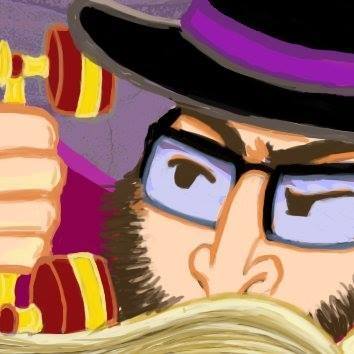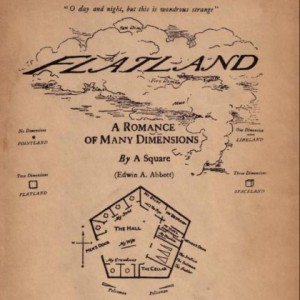Today’s two books are masterstrokes. “The Fault in Our Stars” focuses on a pair of cancer kids, struggling to make their diseases not become the focus of their lives. “The Book of Human Insects”, meanwhile is a character study of a woman who metamorphoses to suit the needs of her new environment, while destroying everything around her. Both books’ authors make solid connections with their readers. While John Green achieves his literary victory through nailing perfect formula, Osamu Tezuka achieves success through grasping tight the fringes of a story, and refusing to let go.
 I don’t need to prove that internet celebrity John Green’s novel is well-received. The Fault in Our Star’s Amazon page can do my work for me. So far, 721 people have voted on this book, and they gave it a 4.8 star rating out of a possible 5 stars. 89% of the voters gave this book a rating of five stars. For comparison sake, ‘To Kill a Mockingbird’, the much beloved story of a girl learning to understand and accept her small American town, got 4.5 stars (with 2,263 voters). John Green just knocked the snot out of an American classic.
I don’t need to prove that internet celebrity John Green’s novel is well-received. The Fault in Our Star’s Amazon page can do my work for me. So far, 721 people have voted on this book, and they gave it a 4.8 star rating out of a possible 5 stars. 89% of the voters gave this book a rating of five stars. For comparison sake, ‘To Kill a Mockingbird’, the much beloved story of a girl learning to understand and accept her small American town, got 4.5 stars (with 2,263 voters). John Green just knocked the snot out of an American classic.
 The other book on our reading list today, The Book of Human Insects, is a manga written by by Osamu Tezuka. That would be “Godfather of Anime” Osamu Tezuka. Western audiences sometimes recognize him as the author and creator of the mangas Astro Boy, Kimba the White Lion and Metropolis. Eastern audiences compare his output and diversity to Walt Disney. According to Wikipedia, Osamu Tezuka penned over 700 manga totaling more than 150,000 pages. Scott McCloud, in Making Comics, relays the theory that the reason Japanese Manga is so diverse today, while American comic books still gravitate toward superheros, is because Osamu Tezuka had such an incredible range of style and subject matter, that anyone who attempted to copy him, would only pick up on one of his many attributes and excel at that.
The other book on our reading list today, The Book of Human Insects, is a manga written by by Osamu Tezuka. That would be “Godfather of Anime” Osamu Tezuka. Western audiences sometimes recognize him as the author and creator of the mangas Astro Boy, Kimba the White Lion and Metropolis. Eastern audiences compare his output and diversity to Walt Disney. According to Wikipedia, Osamu Tezuka penned over 700 manga totaling more than 150,000 pages. Scott McCloud, in Making Comics, relays the theory that the reason Japanese Manga is so diverse today, while American comic books still gravitate toward superheros, is because Osamu Tezuka had such an incredible range of style and subject matter, that anyone who attempted to copy him, would only pick up on one of his many attributes and excel at that.
Unlike The Fault in Our Stars, The Book of Human Insects refuses to play formula. In the first ten or so pages, characters enter stage left and immediately exit stage right. Amid this flow of characters flits Toshiko Tomura, a woman who nestles up to people, mimics their talents, then leaves her host sucked dry of life. She’s a spectacular disaster, and the manga keeps pace with her as she transforms. Toshiko never allows the reader to be comfortable with sympathizing for her, but, even so, it’s impossible not to be fascinated. Like a black widow spider, or a praying mantis, Toshiko draws the reader in with her alienation, and, even as she devours her host, we can’t help but watch. This, mind you, for a manga that was written in 1970. Osamu Tezuka was experimenting with adult themed mangas during this period, and, while the censors turned a blind eye, Osamu flooded his book with honest sensuality. At times, it can be painful to watch Toshiko use her sexuality as a means to get at what she desires. Osamu isn’t an ill-informed product of his times, however. He’s well known for treating all his characters with dignity, and has written numerous mangas with heroic female leads. Toshiko isn’t here to represent womankind. Osamu, instead, illustrates a monster, with a beautiful smile. He’s presenting his audience with someone that they like, despite themselves, and asks us ‘Why?’
The Book of Human Insects sure does ask more questions than The Fault in Our Stars can answer. Augustus Waters, one of the aforementioned cancer kids in that novel, reminds us that “The world is not a wish granting factory.” But if not that, then what? For that matter, why? There is a lot of focus in The Fault in Our Stars on what we have right now. That unsatisfying answer will probably be all that anyone ever gets.
Hazel Grace needs and desires are simple, when compared to Toshiko Tomura’s. Hazel wants to live what is left of her life in relative comfort, away from the sympathetic responses of everyone who notices her oxygen tank. She knows that, when she dies, sometime soon, her death will devastate her parents. She knows that the rest of her life can only be spent being the best person that she can be. So, while she hates going to her cancer support group, she does it, and tries her best not to get involved. She definitely doesn’t want to find the love of her life in a boy in her support group, who has recessive cancer, and that she can only destroy when she dies. Hazel’s character is simple, but it’s that simplicity that draws us to her. Hazel could be you.
Augustus, the undesired love of her life, is a perfect foil for Hazel. Sure he’s witty, handsome and stoic. But if I was to guess at one quality that Augustus has that makes him attractive to TFiOS’s female audience, I’d say that it is because he recognizes Hazel for the wonderful girl she is. Authors, take note: There’s a reason why Twilight has such a positive response among many female readers and a negative one among many male readers. In Twilight, there’s nothing special about Belle. She’s just a shell for the reader to put themselves into to be loved and respected by Edward. In The Fault in Our Stars, however, Hazel isn’t a vapid teenager for us to experience Augustus Waters first hand. She’s a tortured, intelligent and funny individual, with just the right mix of philosphy and earthiness, as well as an endearing mad fixation on finding out what happened at the stunted end of her favorite book. We don’t want Hazel to die, but I couldn’t imagine it happening to a better person.
TFiOS is a perfect presentation of formula fiction. Everything in this book screams “This should work!”, from the sympathetic cancer kids, who refuse to accept patronization, to the teen angst love story mixed with equal parts passion and frustration. Indeed, this style of fiction can be dangerous to pull together. If you fail to excel at a story with this premise, your failure will either be forgotten, or ridiculed. When, however, you succeed, and give back to the formula, giving your readers something they accept, then adding adding content to it, you have done a very good thing.
When comparing two books, it’s easy to fall into the trap of declaring one ‘better’ than the other. After having reviewed so many board games, and talking to many players, I know that there is no such thing as the ‘best game’; there can only ever be ‘the best game for right now’. John Green’s and Osamu Tezuka books are both great books. I have high regard for both books, only pausing to remind readers that The Book of Human Insects is rated ‘A’ for Adult.













